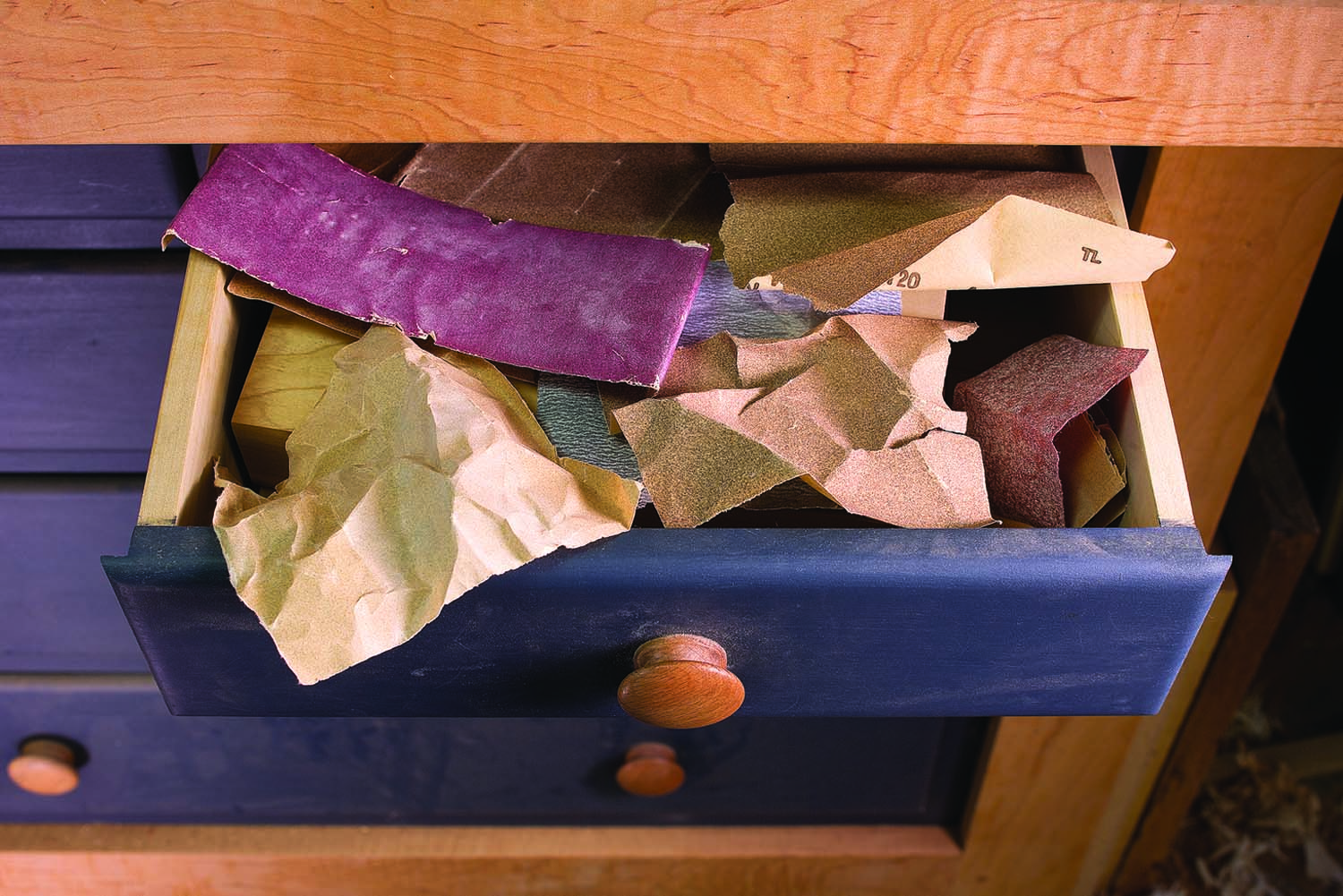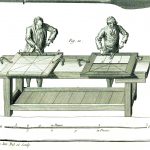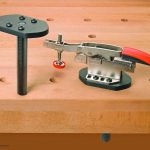We may receive a commission when you use our affiliate links. However, this does not impact our recommendations.

The lessons I learned from Dad’s crumpled and worn-out abrasives.
Whether you’re a professional or hobbyist woodworker, having a keen sense of proper material utilization reduces the cost of projects while extending increasingly hard-to-find resources. Conservation means taking advantage of carefully thought-out plans, cut lists and diagrams, board selection and myriad other techniques – all while avoiding mistakes.
Building Baltic birch plywood drawer boxes the other day, it dawned on me that I’d forgotten to allow space for the full-extension slides. I’m avoiding my accompanying phraseology here; let’s just say I threw an immature tantrum, then trimmed the parts. Later, I wondered what childhood woodworking experience would cause such a negative reaction.
Possibly, my actions resulted from adventures with an obscure sandpaper drawer in a cramped basement workshop. I loved the morning sun’s warming glow beaming into the dust-coated haven that shared precious space with a forced-air furnace and boxes of Christmas decorations.
In that cubbyhole, I avoided my Mom while creating wooden memorabilia including a heavily nailed and crooked pine stepstool and rubber-band guns.
My Dad was my head trainer; he started me off with hand tools and reluctantly issued supplies. Gradually, more elaborate and powerful tools were added, including a Craftsman table saw. Mom was petrified with disbelief: “You can’t let that 10-year-old run a table saw!”
As I finished my first rubber-band gun one Saturday morning, Dad directed me to, “Get some #100 grit from the drawer over there.” Anxious to finish and use my new weapon, I opened the drawer, and dug around for the right paper. What I discovered was an assortment of relics. Crumbled, sandless paper arranged into what looked to be a gerbil’s home away from home.
I grabbed a decomposing piece and sanded like crazy. It was slow going – akin to sweeping a sidewalk with a toothbrush. What seemed like punishment was Dad’s way of teaching me to conserve materials. “Cutting the board this way will give you more pieces” and “Don’t throw that away; we’ll use it later,” were time-honored words of wisdom, imparted to a hyper-active kid with a five-minute attention span who just wanted to build something.
Those primitive projects nurtured a sense of accomplishment the way only wood can. No other medium can offer such complex shapes, patterns and textures. This is not without a price. Nick Engler points out in his June 2000 Popular Woodworking article (#115) “The Way Wood Works” that, “Wood is a cantankerous substance … it’s a complex and often perplexing building material.”
Case-in-point are some oak cabinets I’m just finishing up. Being basically cheap, I picked No. 2 red oak but worried about working around the “cantankerous” defects, potentially rendering boards worthless. However, many times I marveled at the incredible grain patterns as a board exited the planer. Discovering and capitalizing on those unique characteristics while making efficient cuts are challenges all woodworkers face.
My Dad passed away more than 10 years ago but his many lessons still linger. As I scrutinize a board for the best cut, sometimes I get caught short of breath with memories of that little dusty shop where he instilled in me an appreciation for conservation in woodworking.
So these days, after finishing a project I painstakingly gather the well-worn sandpaper and place it in my sandpaper drawer … wait –are you kidding?! I chuck it. Besides conservation, Dad indirectly taught me that sanding with dull sandpaper is sheer agony.
Article: Read “Under the Rope and Into the Doghouse.”
Article: read “It’s OK to Make Mistakes.”
Here are some supplies and tools we find essential in our everyday work around the shop. We may receive a commission from sales referred by our links; however, we have carefully selected these products for their usefulness and quality.









